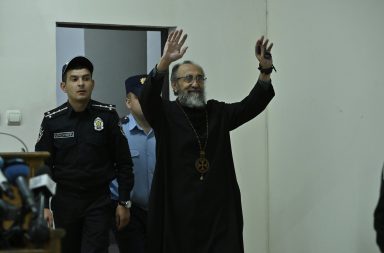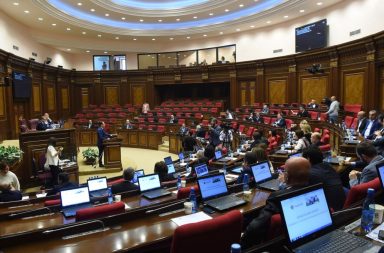On Monday, September 9, the third trilateral meeting of Foreign Ministry regional department leaders was held in the Iranian capital of Tehran, featuring diplomatic delegations representing Armenia, Iran, and India.
The Iranian delegation was led by Mohammad Reza Bahrami, Director General for South Asian Affairs of Iran’s Ministry of Foreign Affairs. The Indian delegation was headed by Anand Prakash, Joint Secretary of the Pakistan, Afghanistan, and Iran Division of India’s Ministry of External Affairs. Finally, the Armenian delegation was led by Anahit Karapetyan, Head of the Asia and Pacific Department of Armenia’s Ministry of Foreign Affairs.
The three delegations issued a positive joint statement, welcoming the consistent and annual format of the trilateral meetings and providing an overview of the progress achieved since the first gathering in Yerevan in April 2023, as well as the second meeting in New Delhi in December 2024. Moreover, the statement emphasized the importance of implementing previously agreed goals to safeguard mutual interests and to promote prosperity and stability in the region.
After reviewing previous goals, discussions proceeded on several current international issues. These discussions highlighted the need to expand and deepen cooperation in communications, the International North-South Transport Corridor (INSTC), and Armenia’s “Crossroads of Peace” initiative, making use of the strategic role of Iran’s Chabahar Port. The delegations also emphasized initiatives to strengthen relations in economic, trade, cultural, and people-to-people spheres.
Two keystone economic plans of the current Armenian government can be seen in these discussions. Firstly, the International North-South Transport Corridor (INSTC) has seen ever-increasing volumes of trade since its inauguration in 2002. However, though Armenia is a member state of the project and has signed agreements for infrastructure development dating back to 2012, Armenia is still bypassed by INSTC routes, which instead pass entirely through the territory of Azerbaijan en route to Indian Ocean port destinations in Iran. Armenia’s repeated proposals for a railway extension linking INSTC trade routes to Armenian territory have still not been implemented.
Similarly, the “Crossroads of Peace” is a prominent objective of the current Armenian government, which has taken significant steps in recent years to expand Armenian trade and relations with its neighbors, including neighbors traditionally considered hostile. A well-known plank of the Pashinyan government’s foreign policy is the opening of Armenia to relations with Azerbaijan and Turkey, a highly controversial step within both Armenia and the region that has also been fraught with difficulties, ranging from the Artsakh question to the status of Armenia’s
relations with Russia. The Crossroads of Peace plan places its greatest emphasis specifically on the development of cross-border infrastructure with Azerbaijan and Turkey, two countries that up to this point have had closed borders with Armenia. The Crossroads of Peace proposal is highly interconnected with Armenia’s efforts to connect with the INSTC, as the road and railroad network proposed in the Crossroads of Peace could then connect to the larger INSTC routes leading through Azerbaijan to Iran.
By mutual agreement, the next trilateral meeting will be held in Armenia at a date to be determined.


